The stone dinosaurs and other treasures in danger
- Published
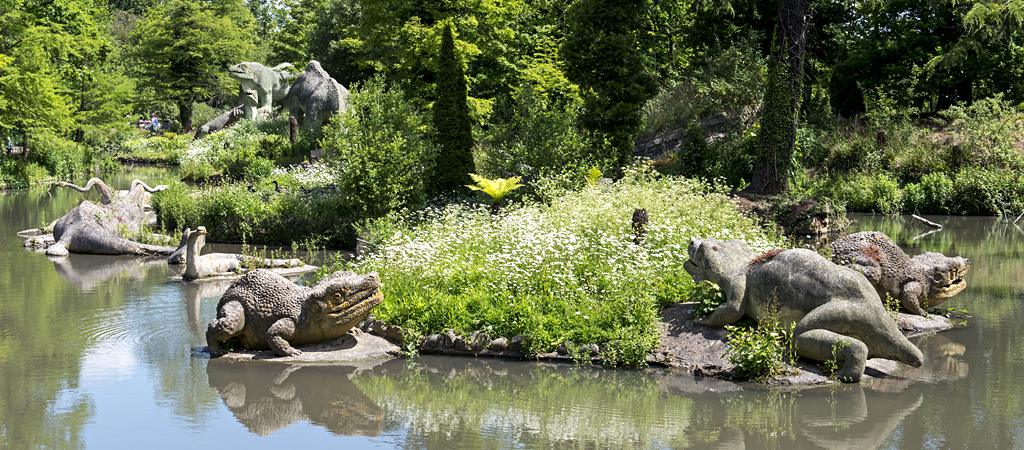
From windswept lighthouses to crumbling mausoleums - with some fierce-looking stone dinosaurs in the mix too - Historic England has published its 2015 list of structures it considers in need of a helping hand.
The Heritage at Risk Register is an annual snapshot - and since 2010, a third of all sites on the list have been rescued.
Take a look at some of the sites which have been added to the register this year - and some of the others which have been saved and taken off the list.

SITES CONSIDERED TO BE IN DANGER
These stone dinosaurs are enjoying a paddle at Crystal Palace Park in south London.
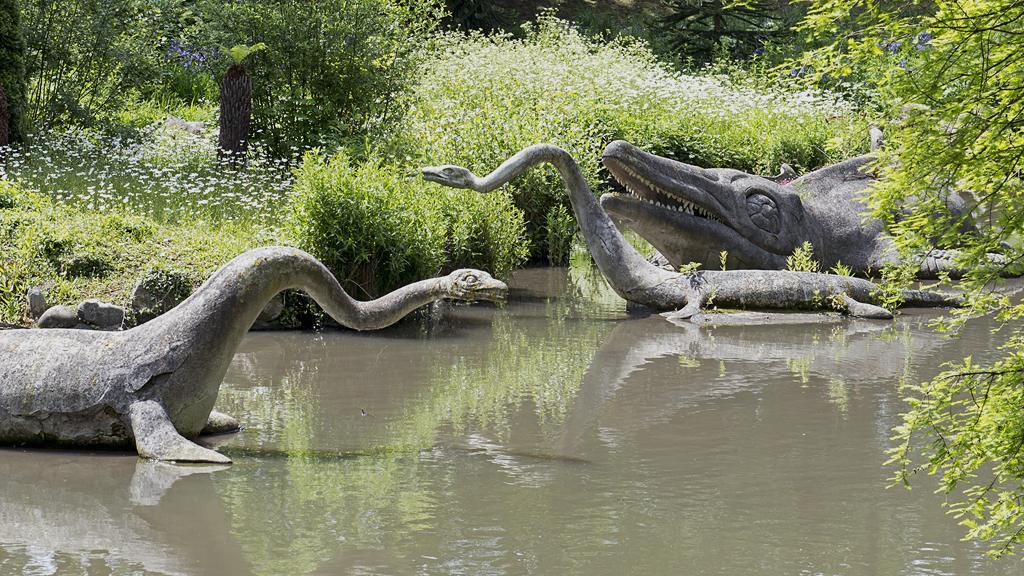
Crystal Palace Park, London
They were the whimsical creations of 19th Century sculptor and natural history artist Benjamin Waterhouse Hawkins.
They are considered "at risk", but there are plans for them to be restored to their former glory.
Find out more about the stone dinosaurs from BBC Radio 4 Natural Histories - The original Jurassic Park
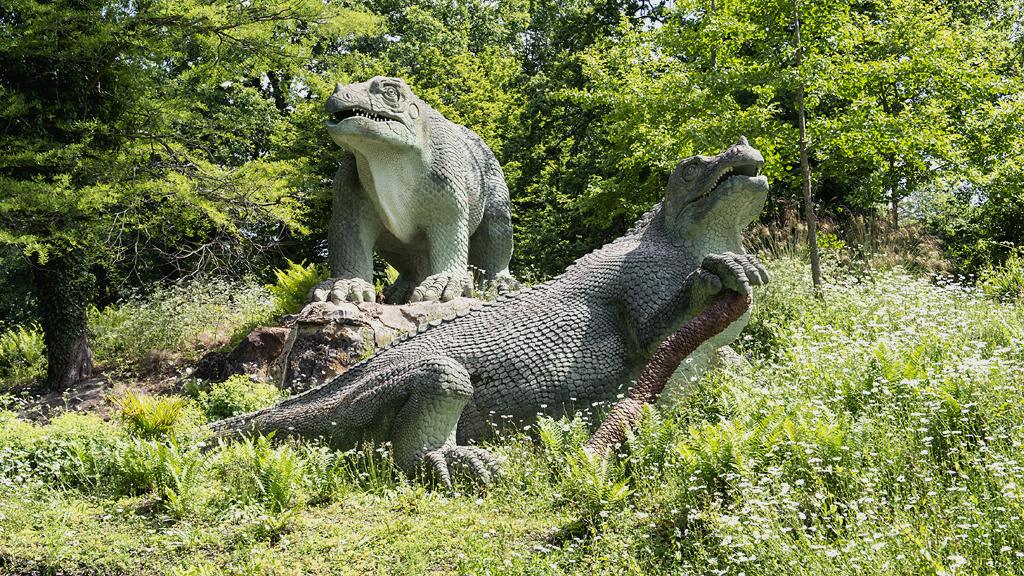
Crystal Palace Park, London
Staying in Crystal Palace Park, these sphinxes are also considered in need of help. They are cracking badly and bits have fallen off.
They have stood alone for decades next to the empty space where the Crystal Palace once stood - before it was destroyed by fire in 1936.
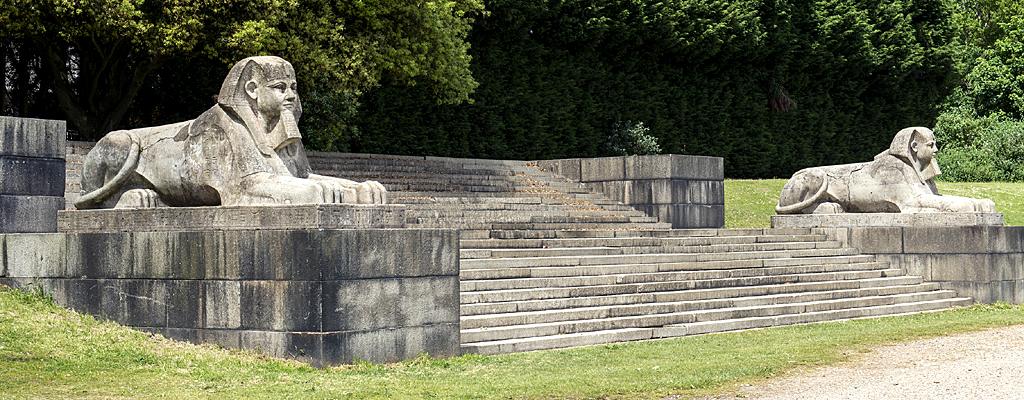
Crystal Palace Park, London
There are plans to improve the whole the park's Grade II*-registered landscape with £2.4m of funding from the local council and the Mayor of London - including these granite steps.
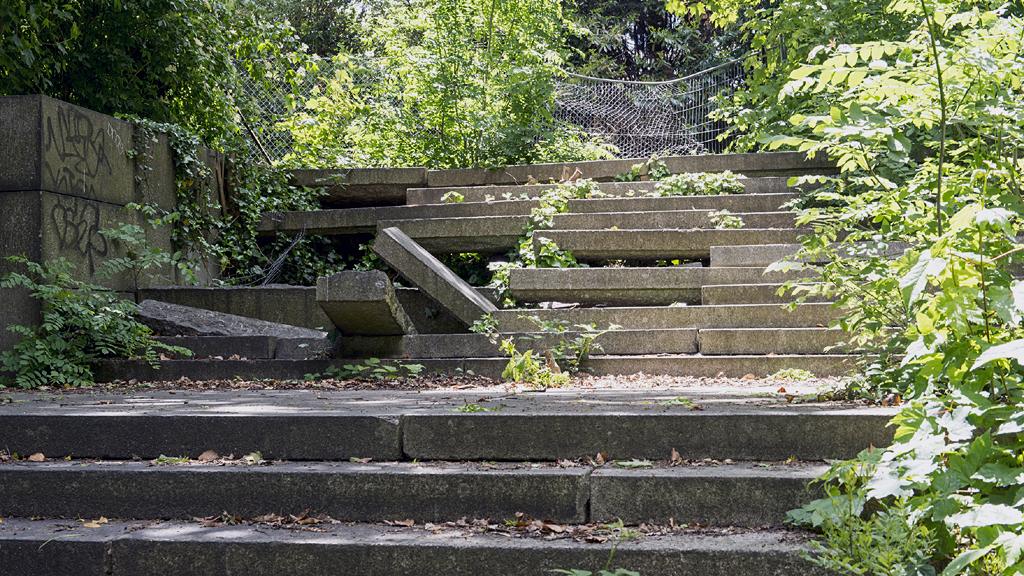
Crystal Palace Park, London
Across the Thames in north London - the mortuary chapel in Abney Park Cemetery, Stoke Newington, is also in need of help - both inside and out.
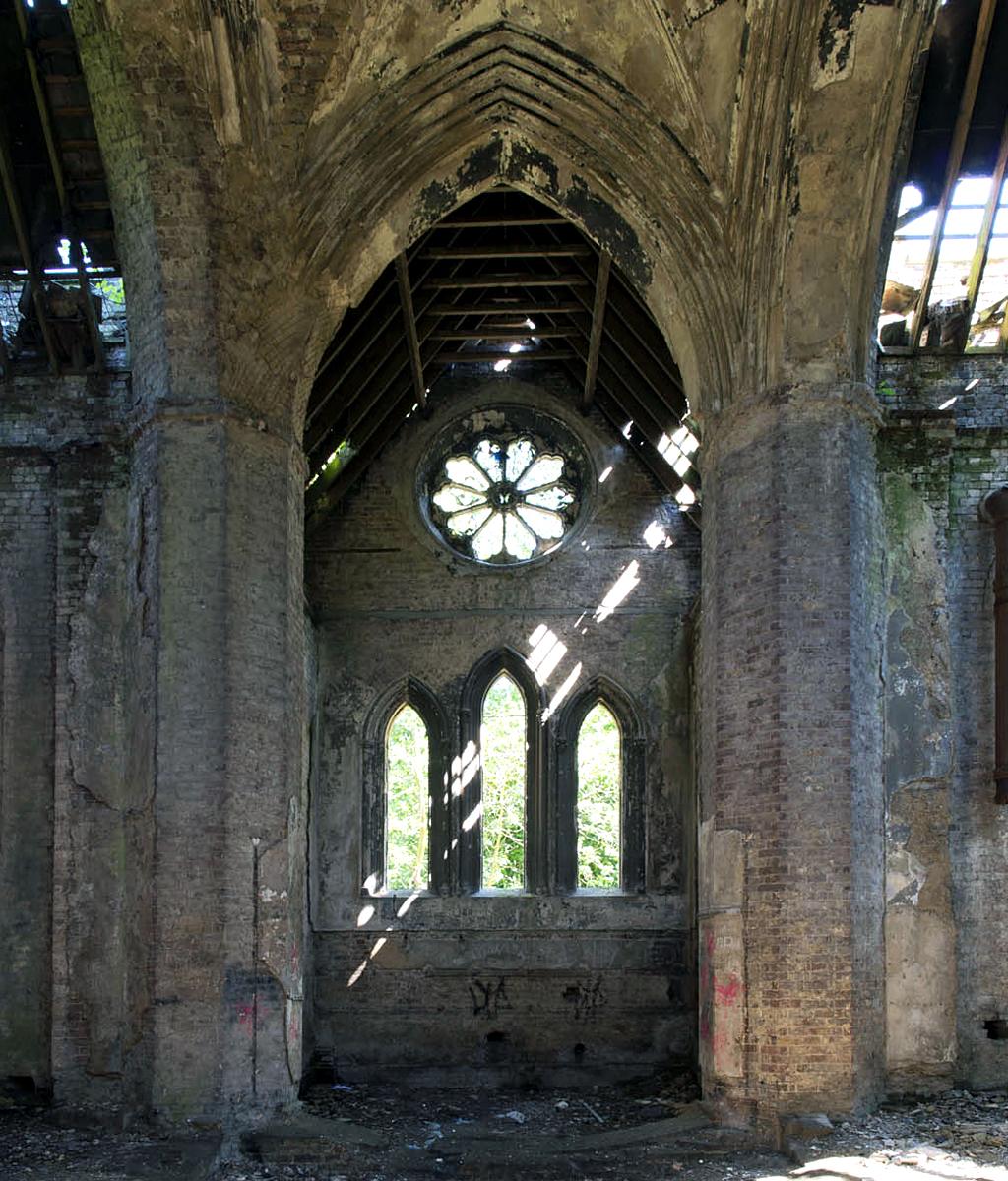
Mortuary chapel in Abney Park Cemetery, Stoke Newington, London

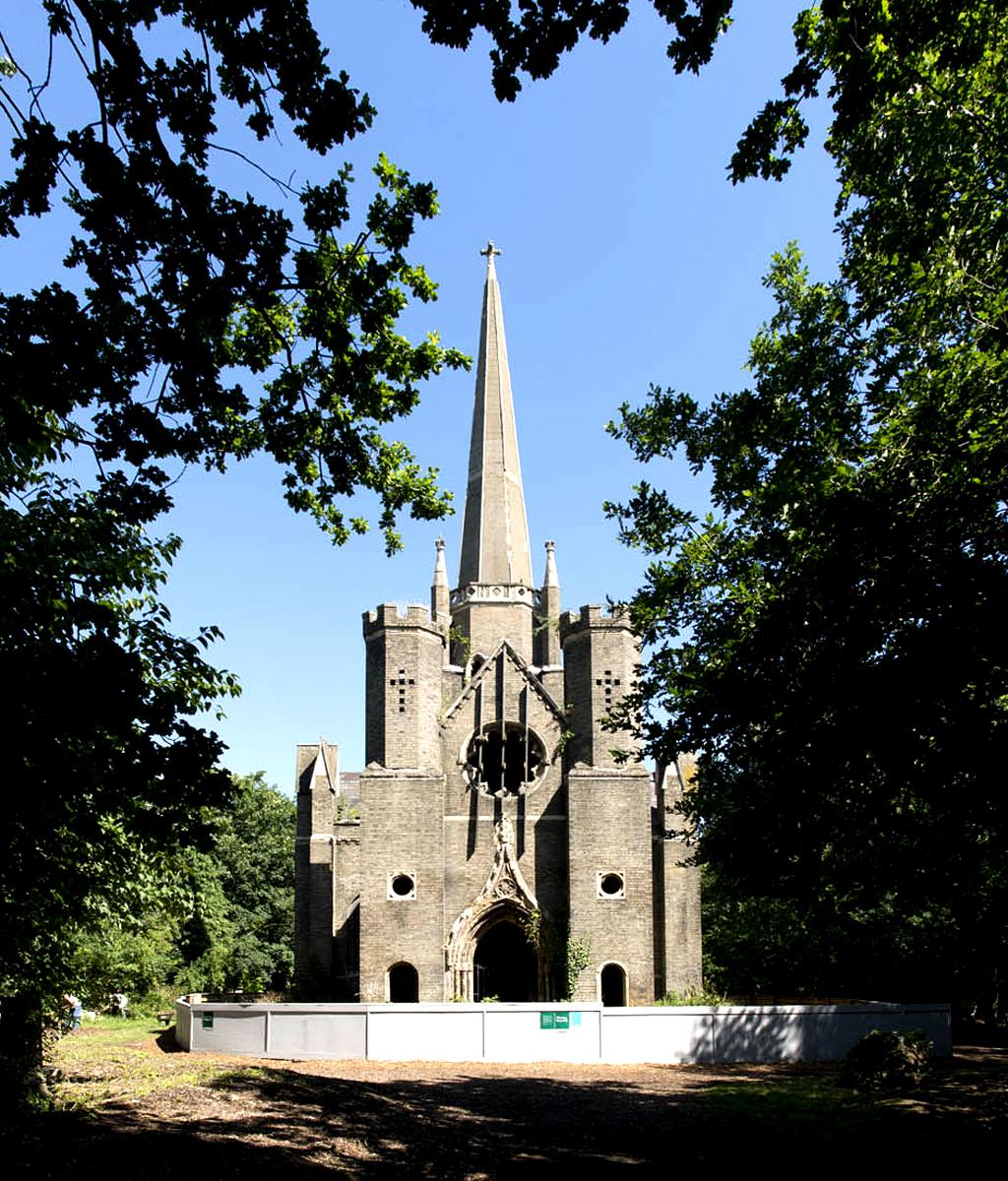
Mortuary chapel in Abney Park Cemetery, Stoke Newington, London
In East Anglia, the Naze Tower - near Walton on the Naze in Essex - is close to 300 years old and Grade II*-listed.
The 86ft high lookout post was used during both the Napoleonic Wars and World War One - and as a radar station during World War Two.
It was re-pointed in sand and cement in the 1970s - but that has led to severe damp and cracking.
Historic England has given a grant to the tower's owners towards building repairs.
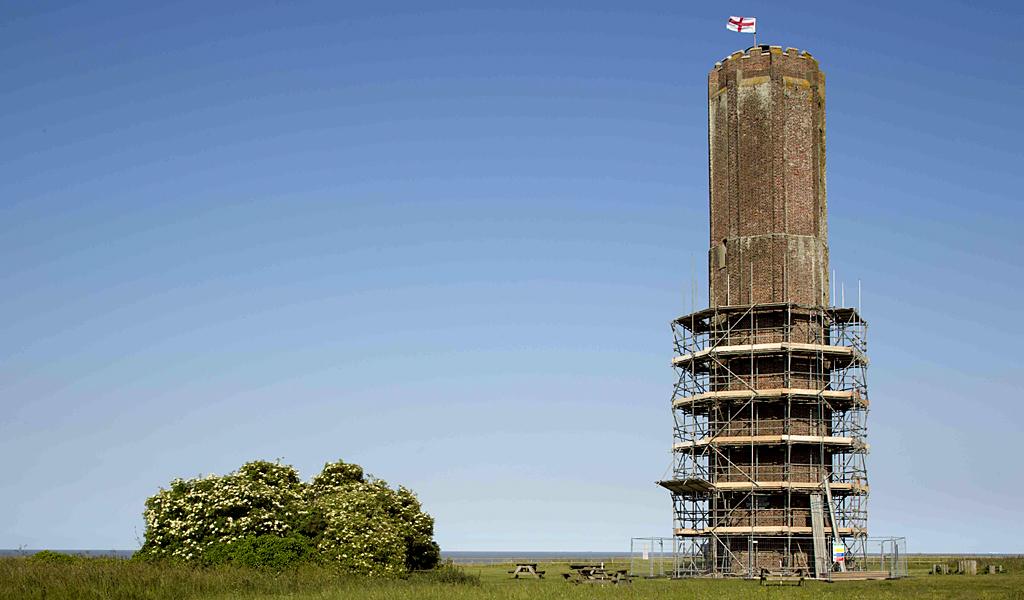
Naze Tower, near Walton on the Naze, Essex
West Norwood Cemetery is one of the "magnificent seven" Victorian cemeteries in London. The list also includes Highgate, Brompton and Kensal Green cemeteries.
The West Norwood site was severely damaged in World War Two.
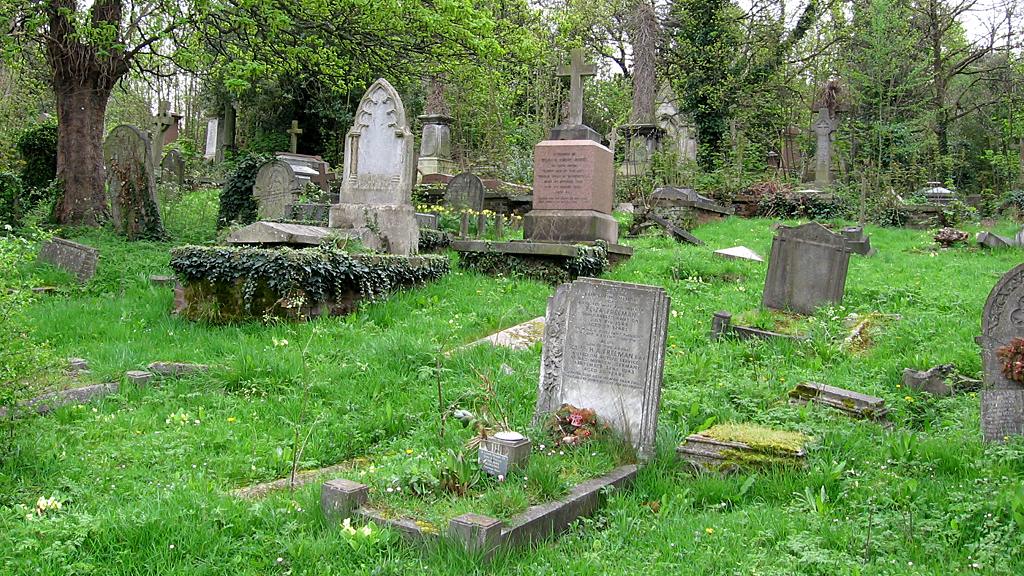
West Norwood Cemetery, London
Historic England says there are 20 monuments "at risk" in the cemetery - including the mausoleum of George Dodd, who was an MP in the mid-1800s.
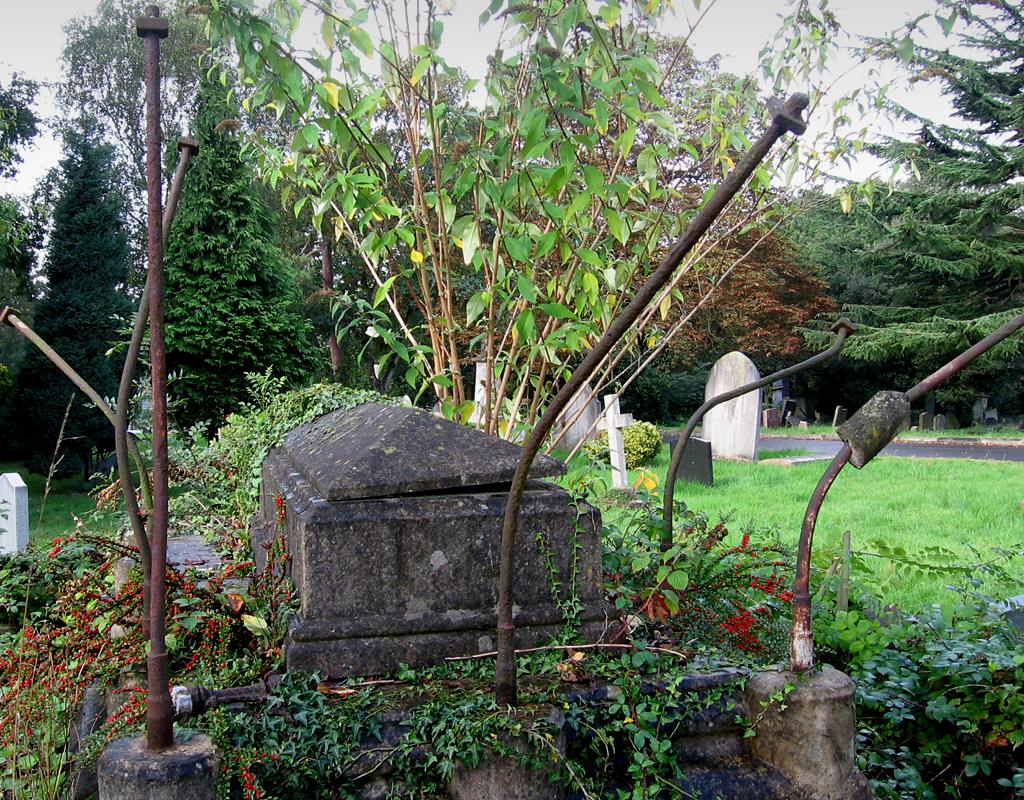
West Norwood Cemetery, London
This next mausoleum of Joseph Hudson can be found in Kensal Green Cemetery. It is Grade II-listed - but in need of help.
Hudson fought in the Napoleonic Wars, and later became a successful tobacconist with a shop in London's Oxford Street.
Made of Portland stone and dating from 1850, it is one of the cemetery's most ornate tombs.
But plants and saplings are damaging the roof and water is getting inside.
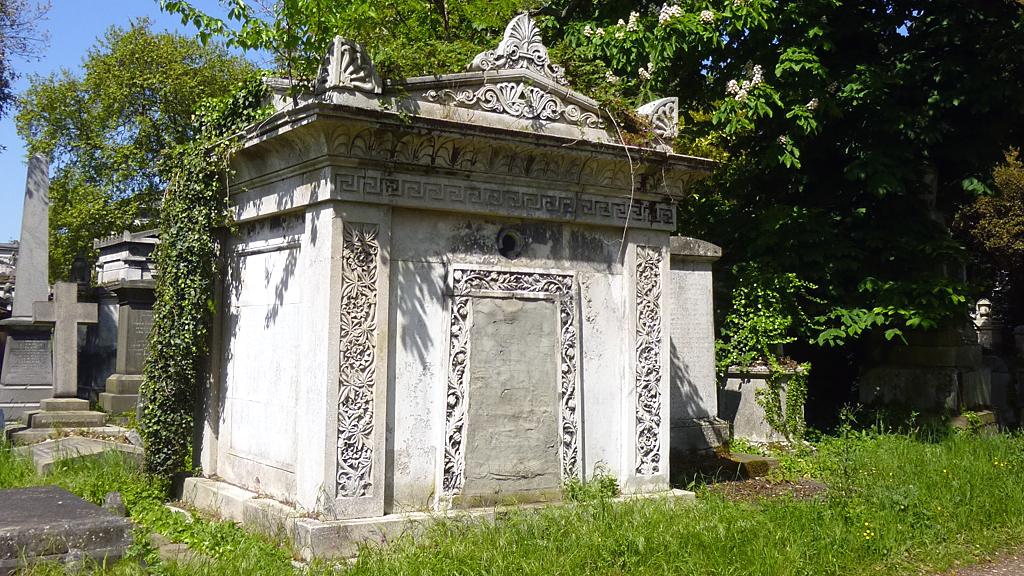
Kensal Green Cemetery, London
Out of London, hidden in bushes on the side of the M40 near Banbury in Oxfordshire, this is the site of the "at risk" National Filling Factory,
It was one of several sites built in World War One to fill shells with high explosives. Towards the end of the war it was converted to produce poison gas.
It is protected as a scheduled monument.
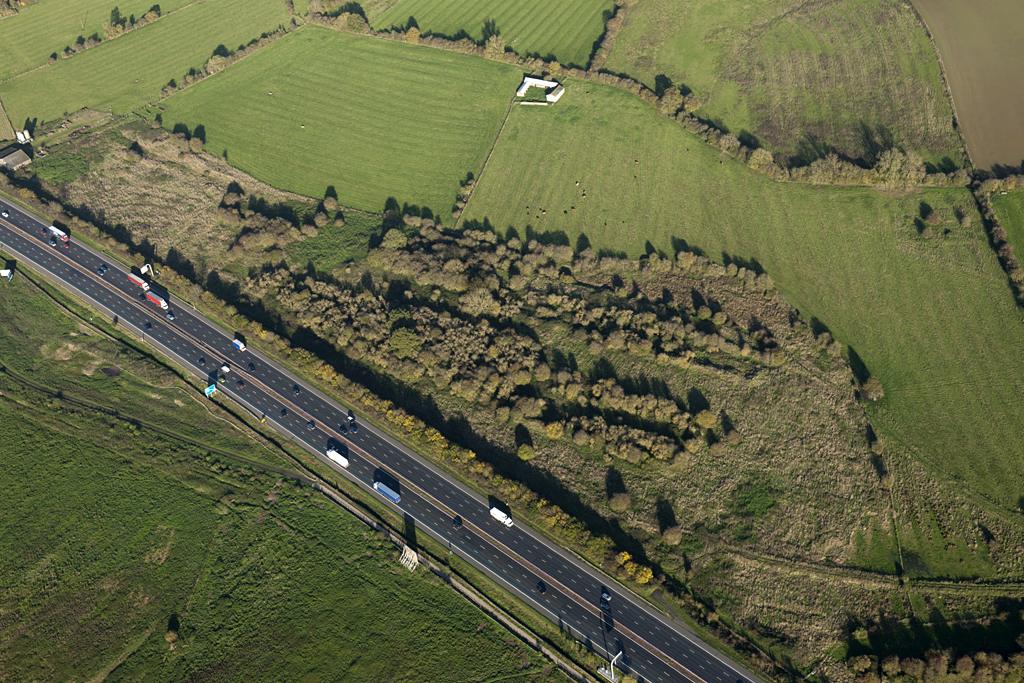
Site of National Filling Factory, Banbury, Oxfordshire
The Old Pier Lighthouse, at Roker in Sunderland, was built in 1856 on the old South Pier - and used until the start of the 20th Century. It is grade II* listed.
In 1983 it was moved to nearby Roker Cliff Park, but 30 years of salty wind and rain have not been kind.
Water is getting into the lighthouse and some of the metal structure is starting to corrode. Sunderland City Council is planning to start repair works soon.
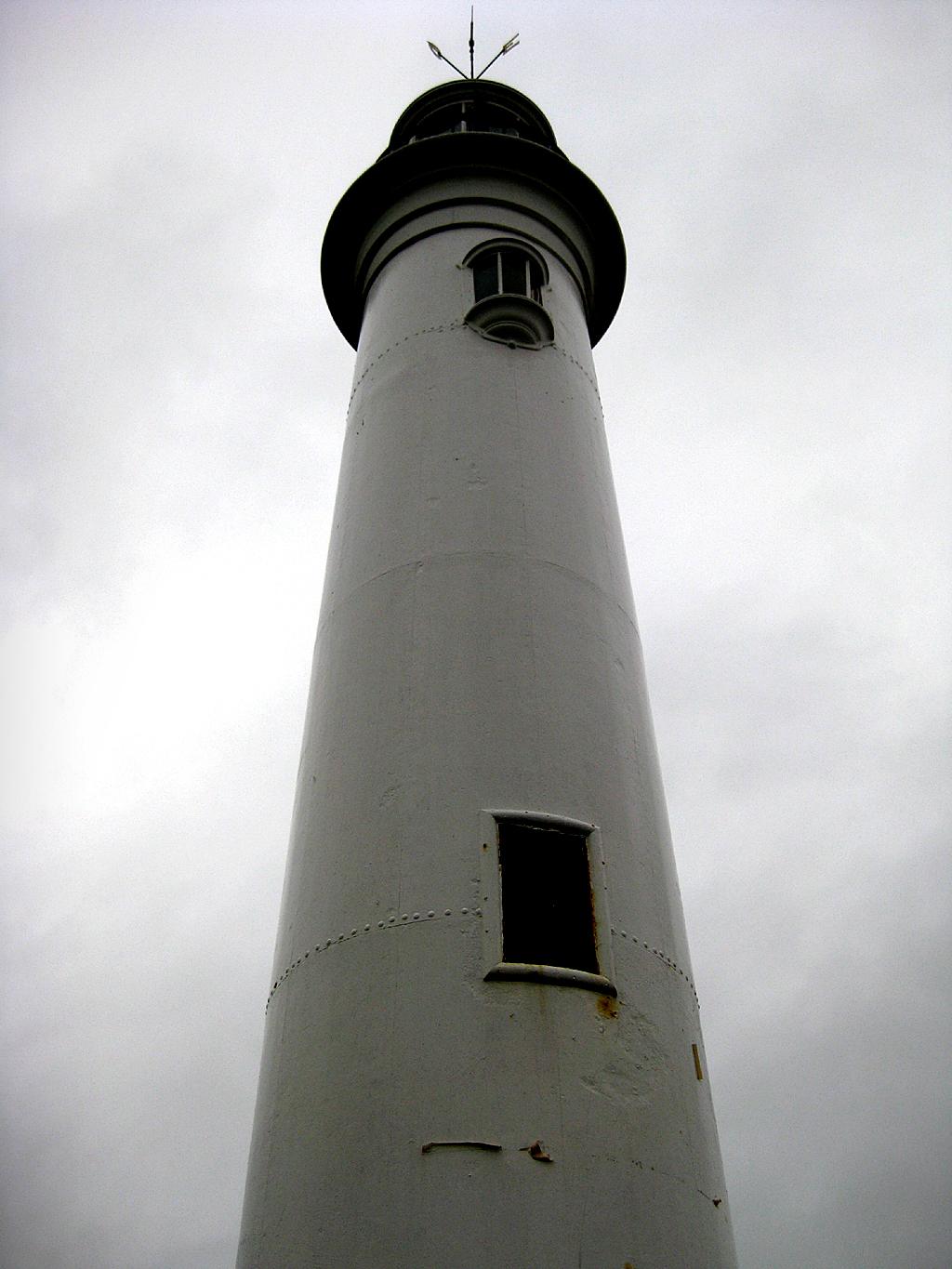
Old Pier Lighthouse, Sunderland
Staying in the North East, Westgate Hill Cemetery in Newcastle upon Tyne was one of the earliest garden cemeteries in England.
The cemetery chapel has been lost, and much of the original layout is covered by weeds and scrub growth.
Many of the surviving monuments have been damaged by weathering, vandalism and invasive plants.
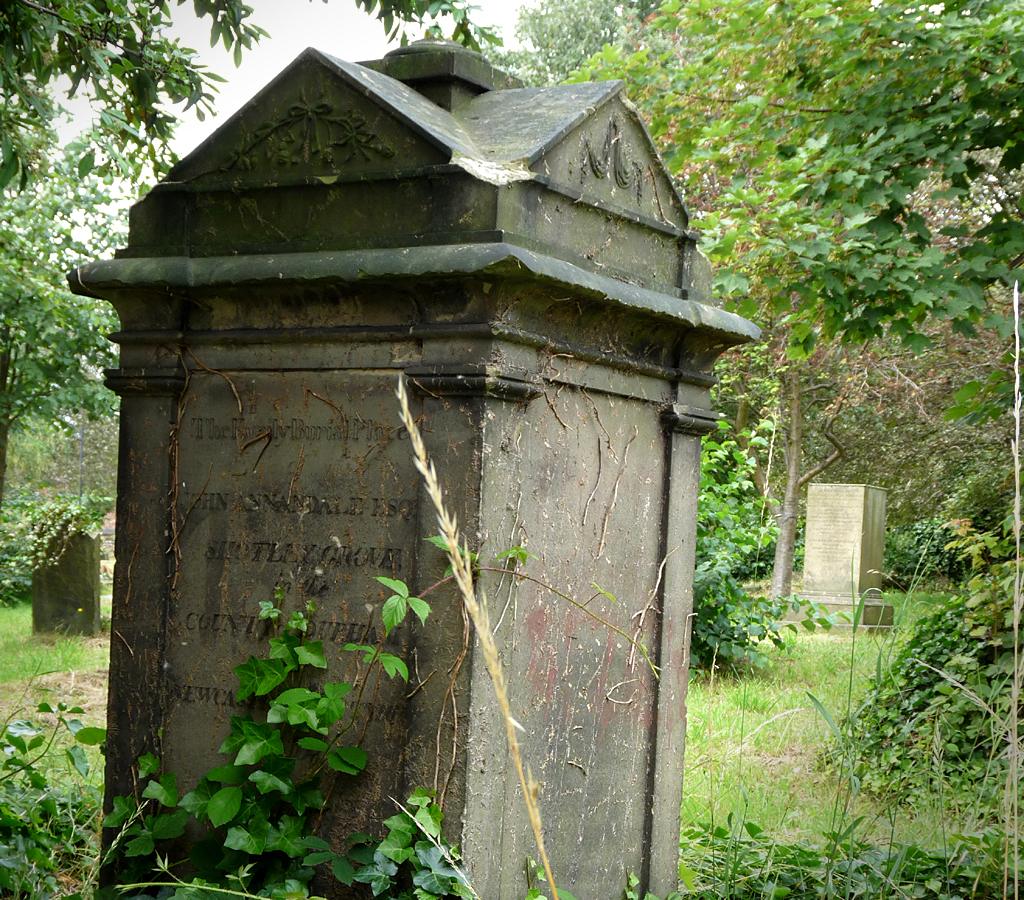
Westgate Hill Cemetery, Newcastle upon Tyne
The next "at risk" building is not yet 50 years old - the Catholic church of St Thomas More, at Sheldon in Birmingham.
It is Grade II-listed, and was built in the late 1960s entirely from concrete, by architect Richard Gilbert Scott.
The roof is leaking, condensation builds up on the windows, and some of the concrete is starting to break up and flake.
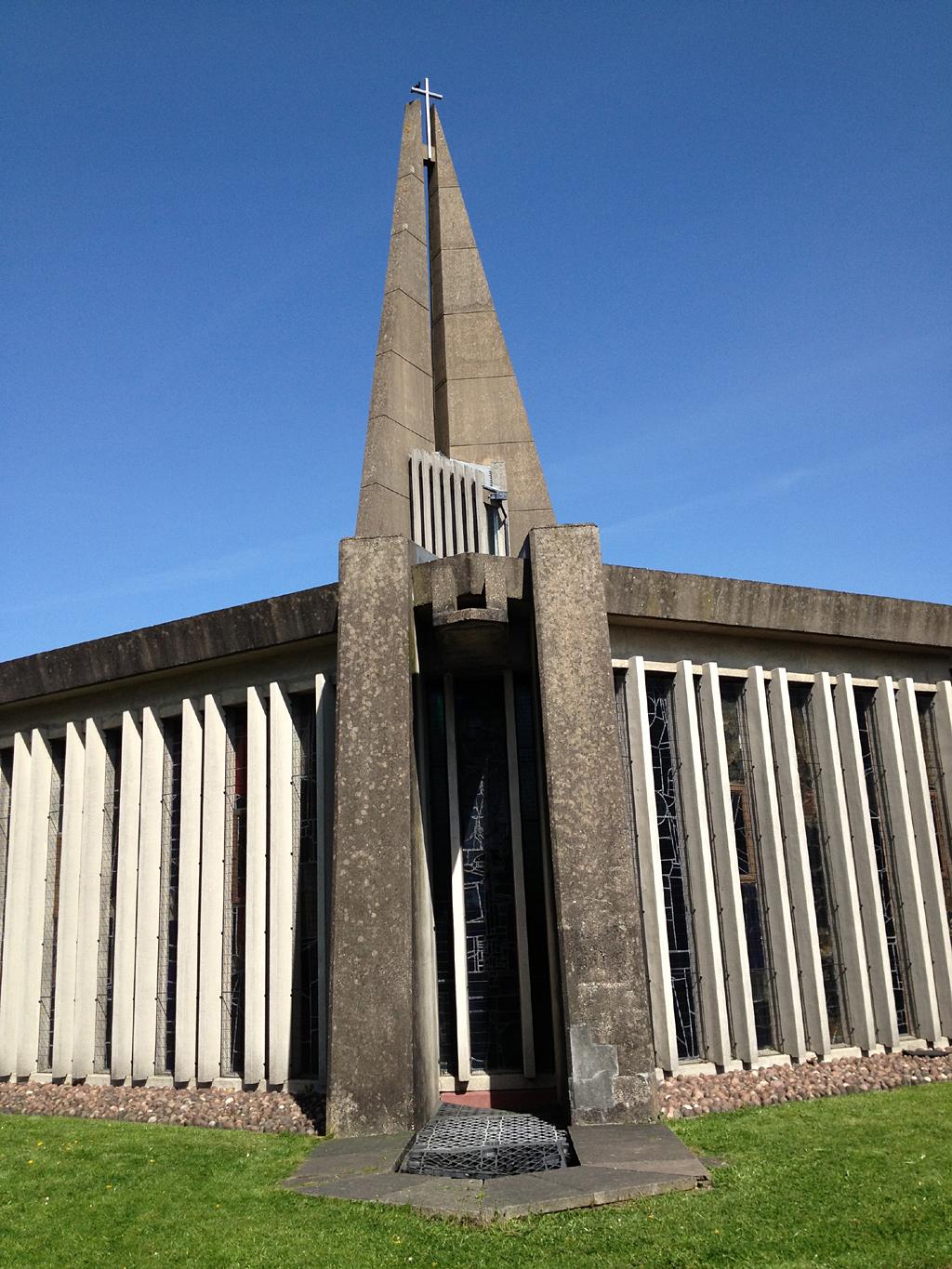
St Thomas More Church, Birmingham
The last item on the "at risk" list is the White Lion pub on the south side of Putney Bridge in London.
Currently empty, the Grade II-listed building was a live music venue in late 1970s and 80s - with punk bands playing there regularly.
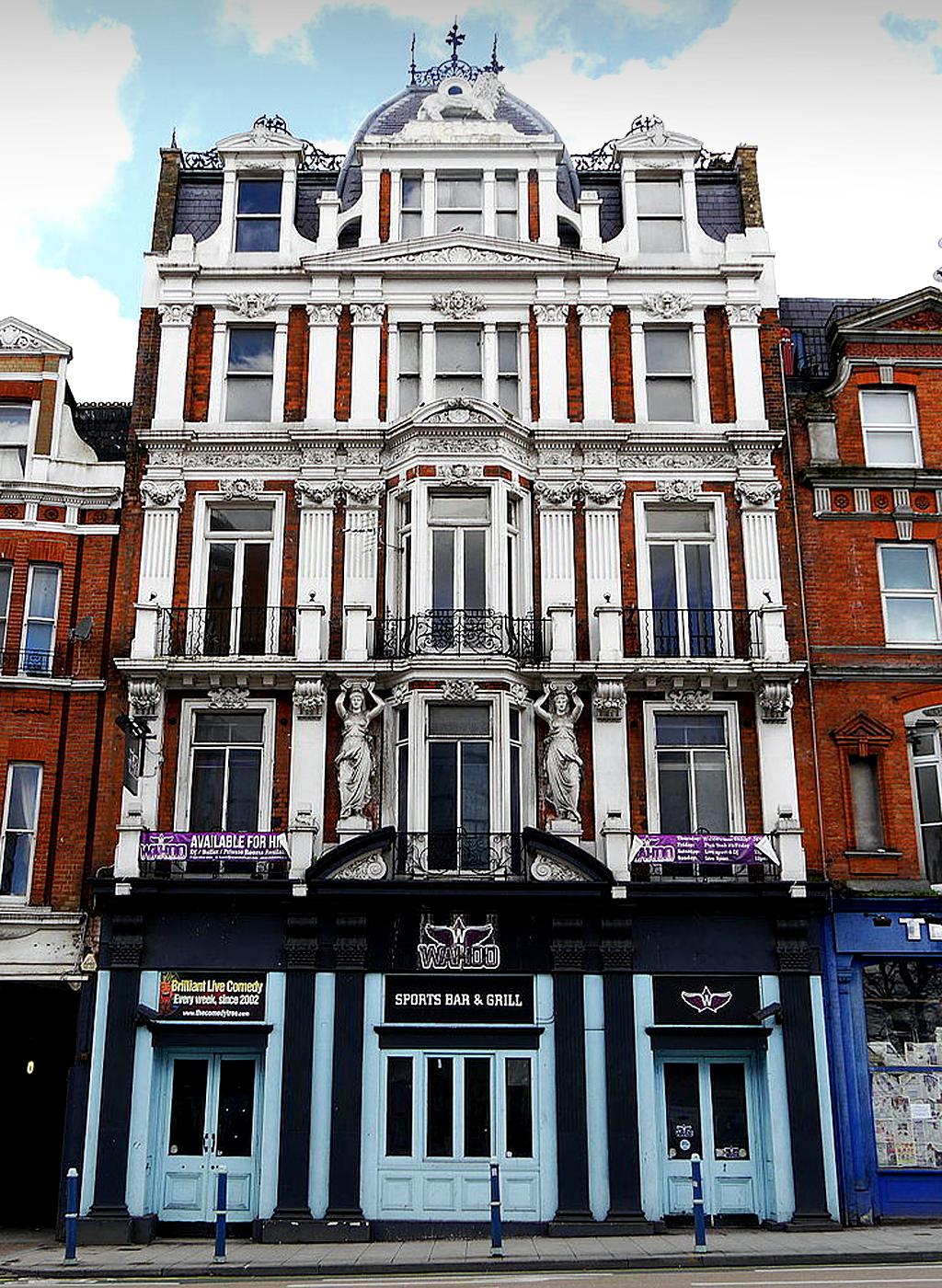
White Lion pub, Putney, London


THE TREASURES NO LONGER AT RISK
The next image shows the grade II*-listed Scenic Railway at the Dreamland amusement park in Margate, Kent, before recent refurbishment.
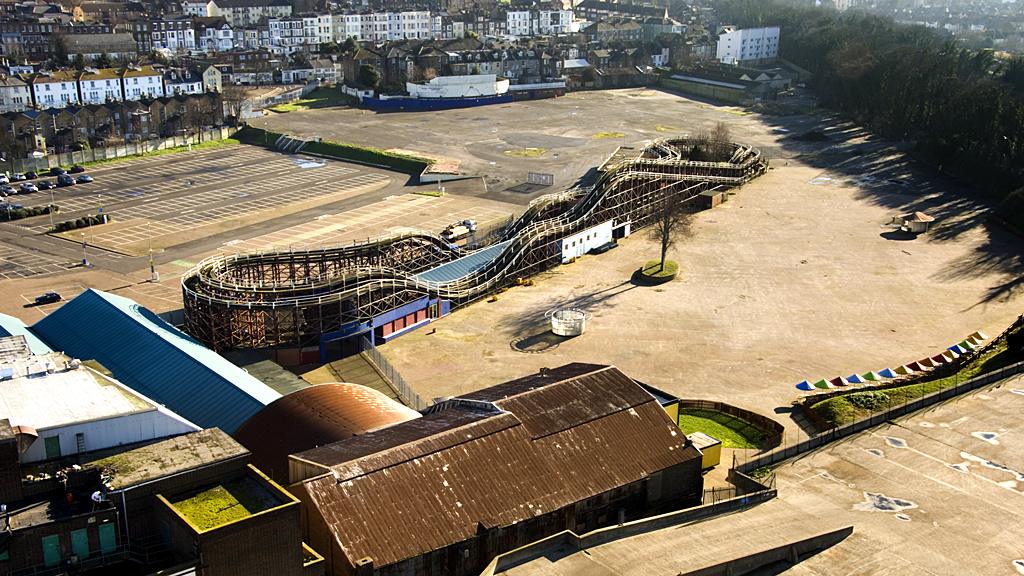
Dreamland, Margate
Opened in 1920, the UK's oldest surviving roller coaster was badly damaged by fire in 2008.
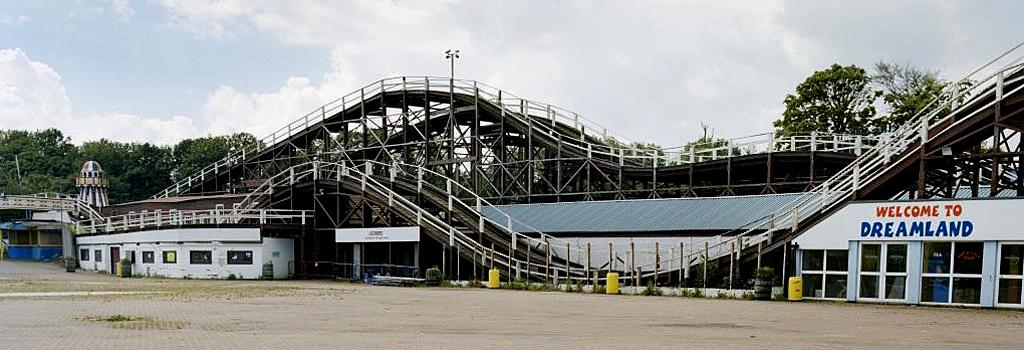
Dreamland, Margate
It is now one of the star attractions at the Dreamland site - which has undergone redevelopment and once again opened as an amusement park.
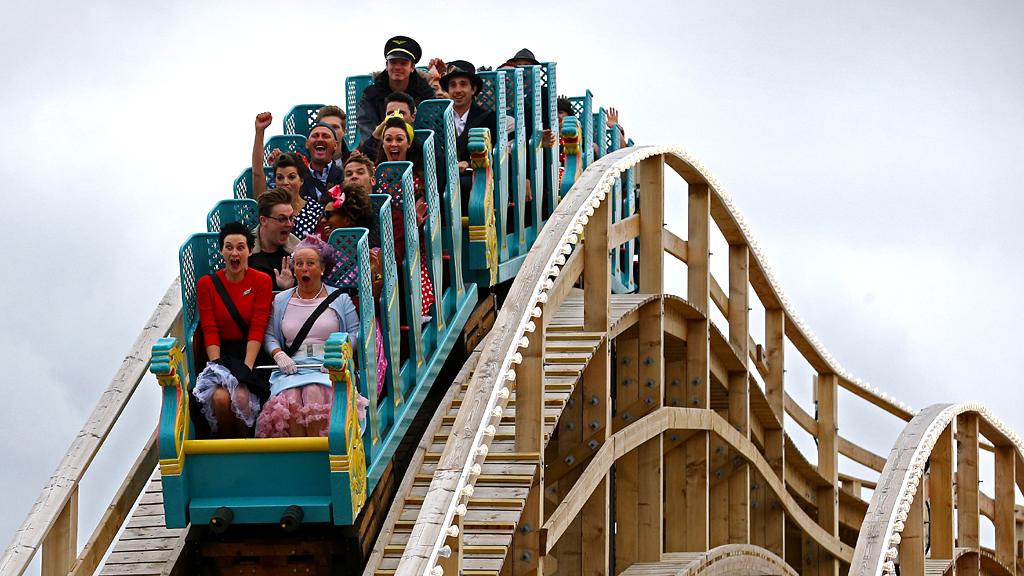
Dreamland, Margate

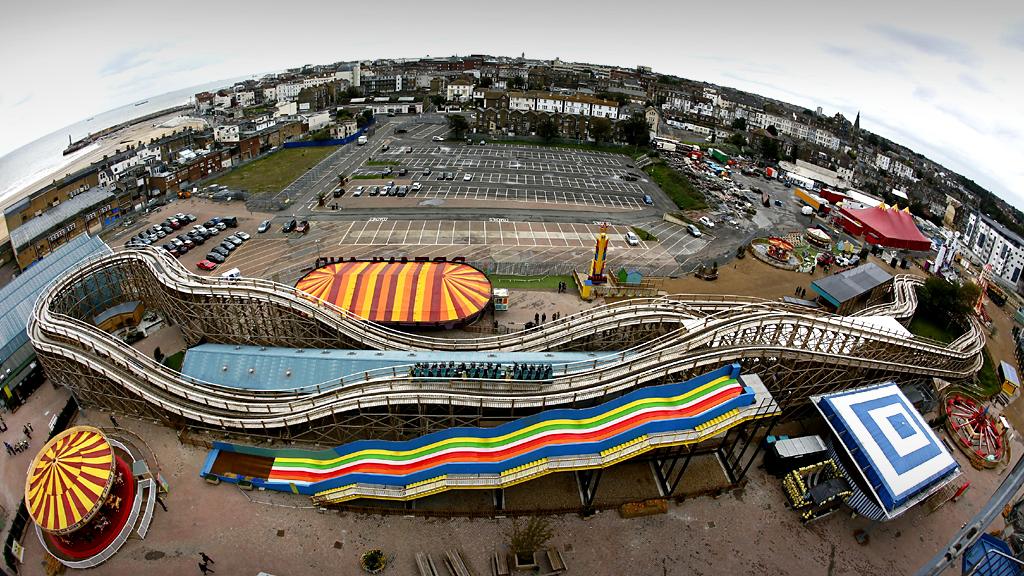
Dreamland, Margate
Another wooden structure with a new lease of life is the oak-framed Harmondsworth Barn, at Hillingdon on the edge of west London.
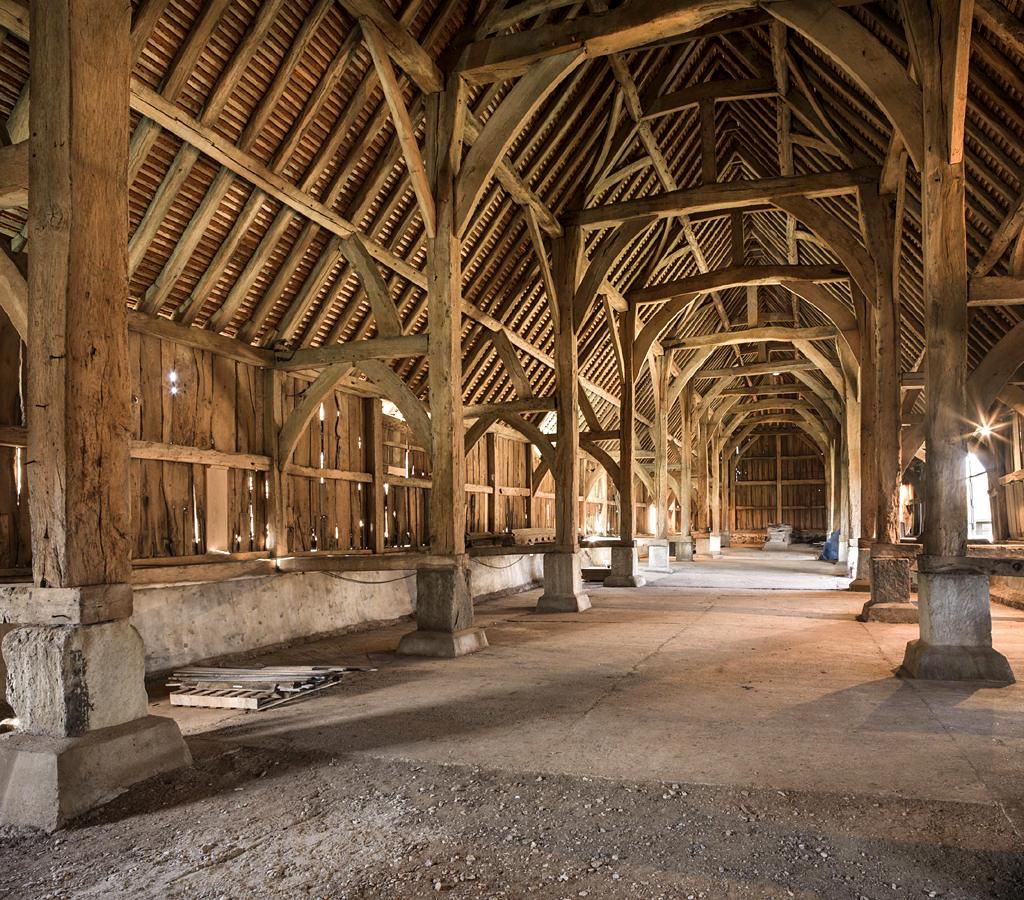
Harmondsworth Barn, Hillingdon, west London
Dating back to 1427, it was described by Sir John Betjeman as the Cathedral of Middlesex and is now Grade I-listed.
Historic England helped fund a substantial restoration programme - and it is now open to the public.
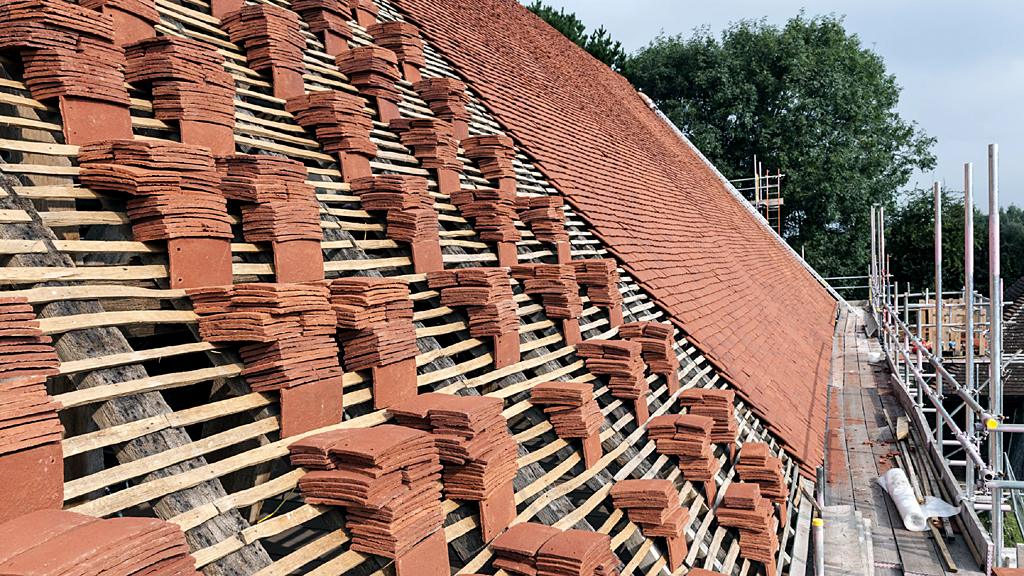
Harmondsworth Barn, Hillingdon, west London
More than £10m was spent restoring the Lion Salt Works, near Northwich in Cheshire.
Located on the side of the Trent and Mersey Canal, the building has now been taken off the "at risk" register - and visitors are encouraged to find out more about open-pan salt extraction.
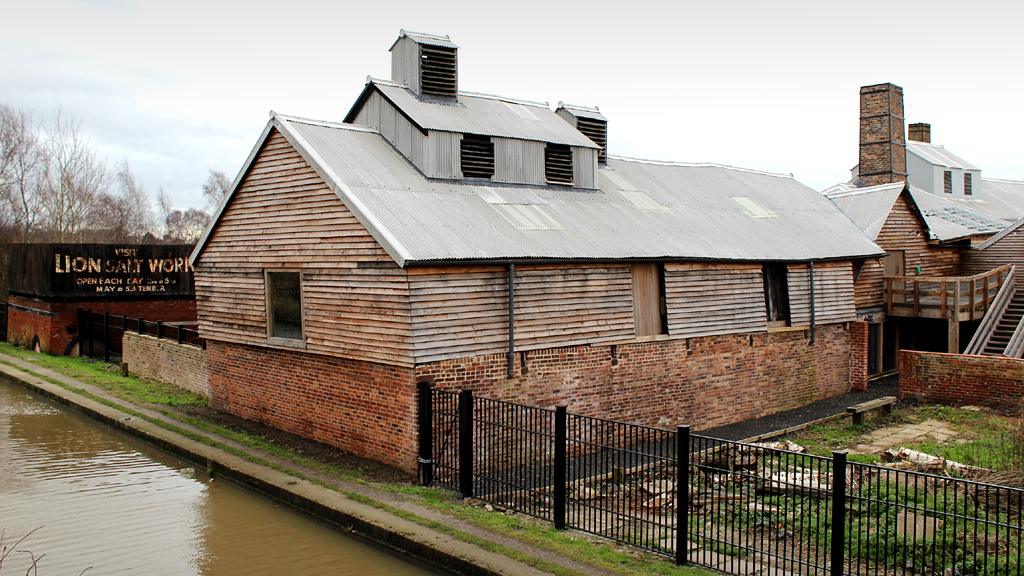
Lion Salt Works, Cheshire
The Paragon Mill at Ancoats in Manchester - where cotton was spun from 1912 - was one of the earliest examples of a mains electric-powered mill.
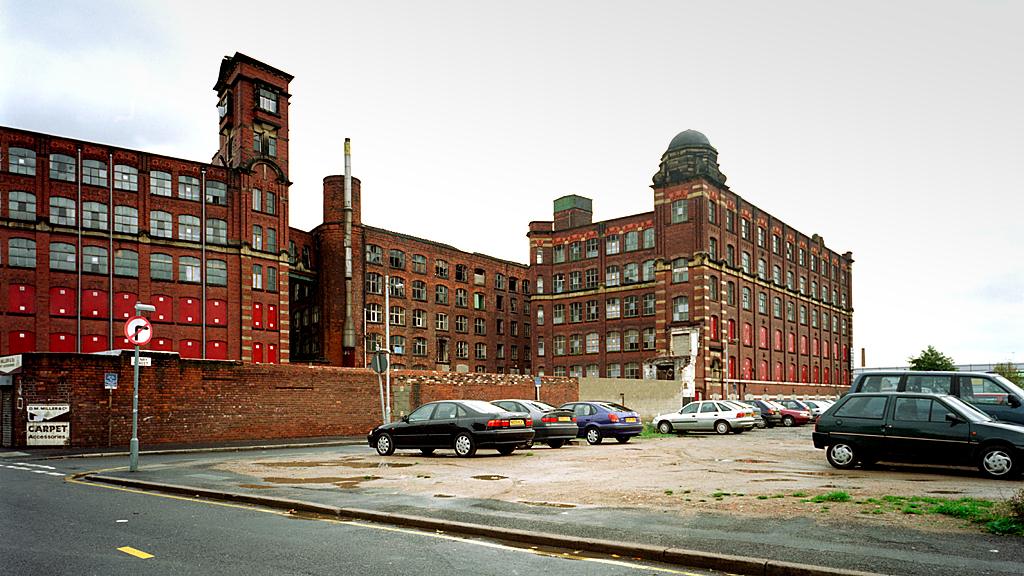
Paragon Mill, Manchester
Left empty after the textile work dried up, the Grade II*-listed site has now been turned into homes.
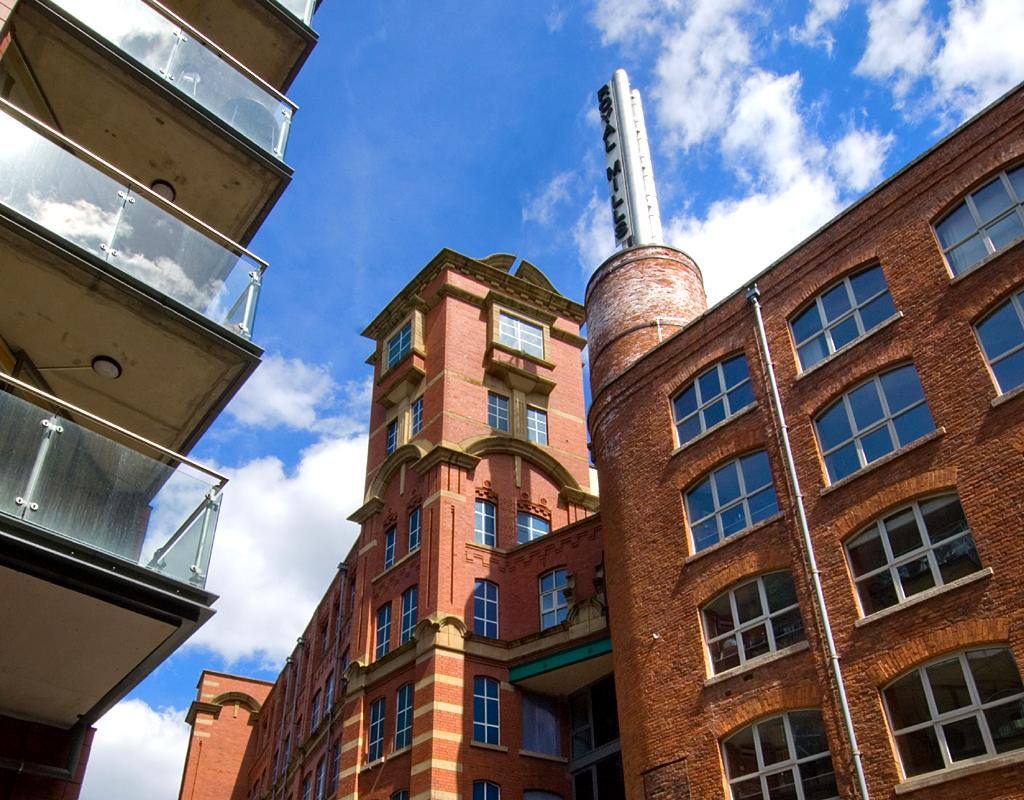
Paragon Mill, Manchester
Greek and Egyptian architectural influences adorn the Nonconformist Chapel in Sheffield's General Cemetery.
The chapel, which is Grade II*-listed, was added to the "at risk" register in 2000 - but it has now been repaired.
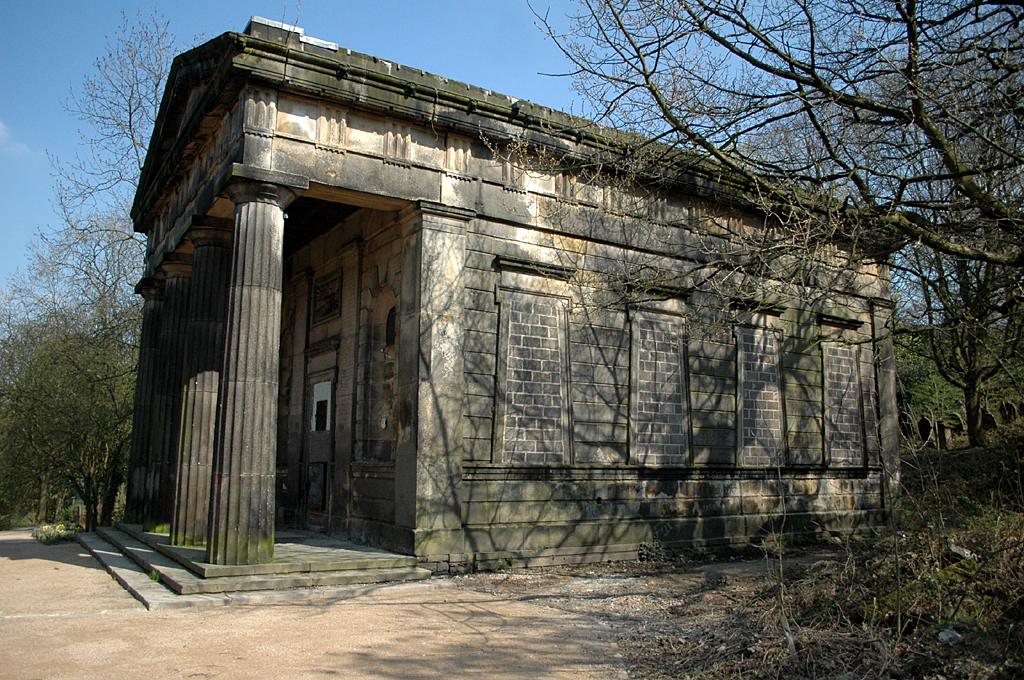
Non-Conformist Chapel, General Cemetery, Sheffield
The Royal Garrison Church of St George, at Woolwich in south-east London, was mostly destroyed by a V2 flying bomb in 1944.
It was left a roofless ruin.
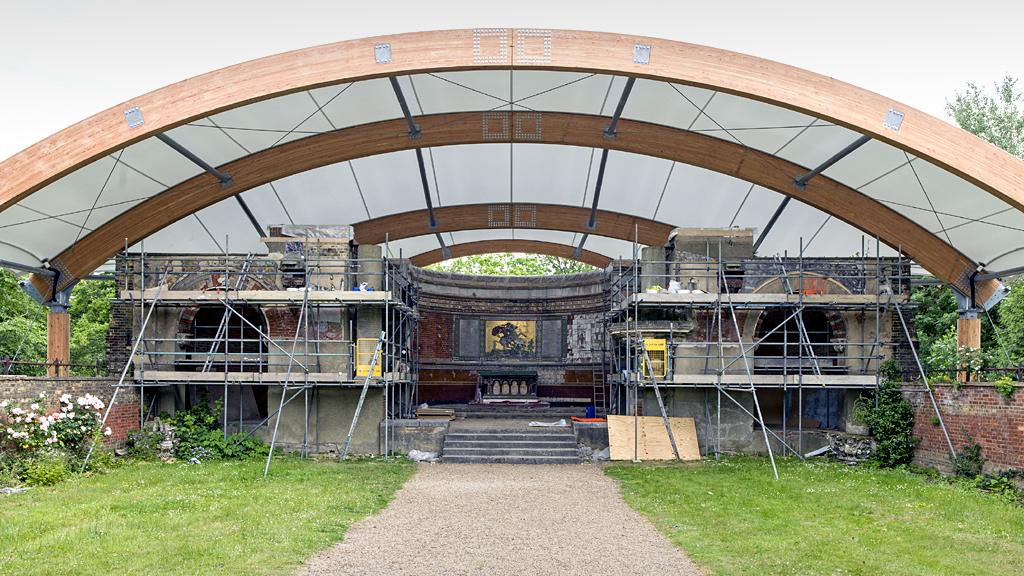
Royal Garrison Church of St George, Woolwich, London
A permanent modern roof now shelters what remains of the church, including the beautiful mosaics that decorate the walls.
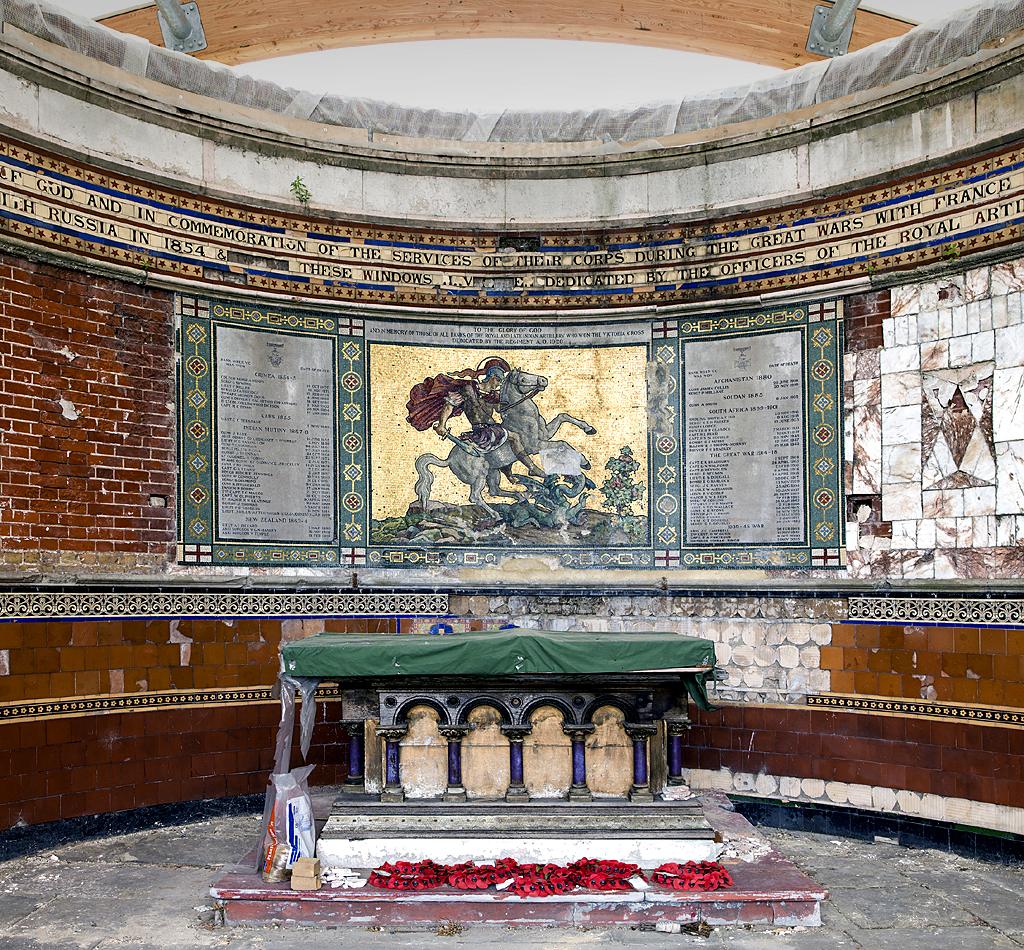
Royal Garrison Church of St George, Woolwich, London
The colossal Grade II*-listed Cardington Airship Sheds - on the edge of Bedford - are vital to the history of airship technology.
Shed No 1 is the only in situ pre-1918 hangar to survive in Europe. It measures 20,000 square metres and is 50m high.
It was on the first ever Heritage at Risk Register in 1998 - but a jointly-funded £11m restoration project started three years ago.
It now houses the prototype for a new generation of airships.
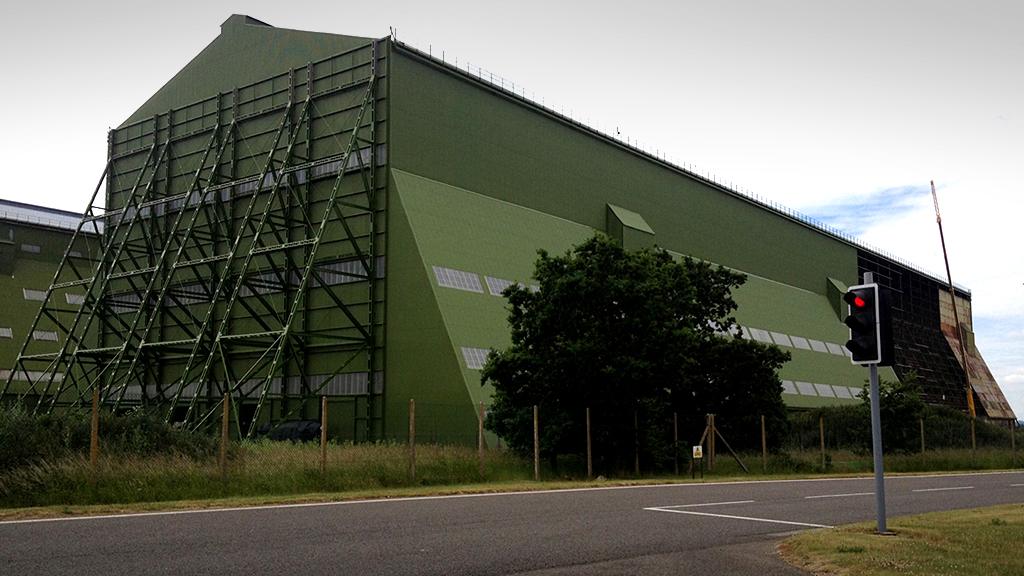
Cardington Airship Shed, Bedfordshire
Our final restoration location is in central London. Number 76 Dean Street in Soho was gutted by fire in 2009.
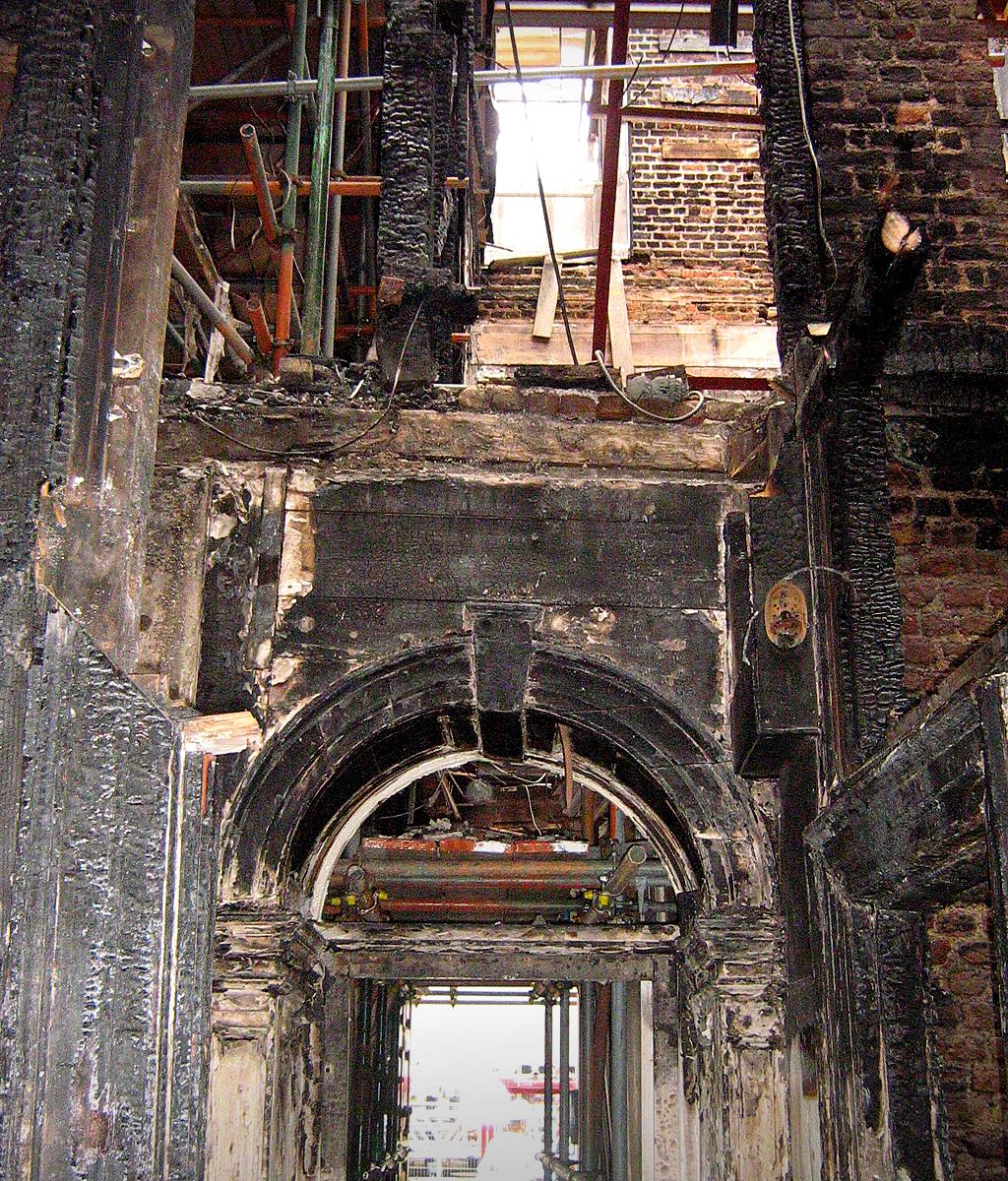
76 Dean St, Soho, London
The Grade II* terraced town house dating from the 1730s has been newly restored and revived as a private members club.
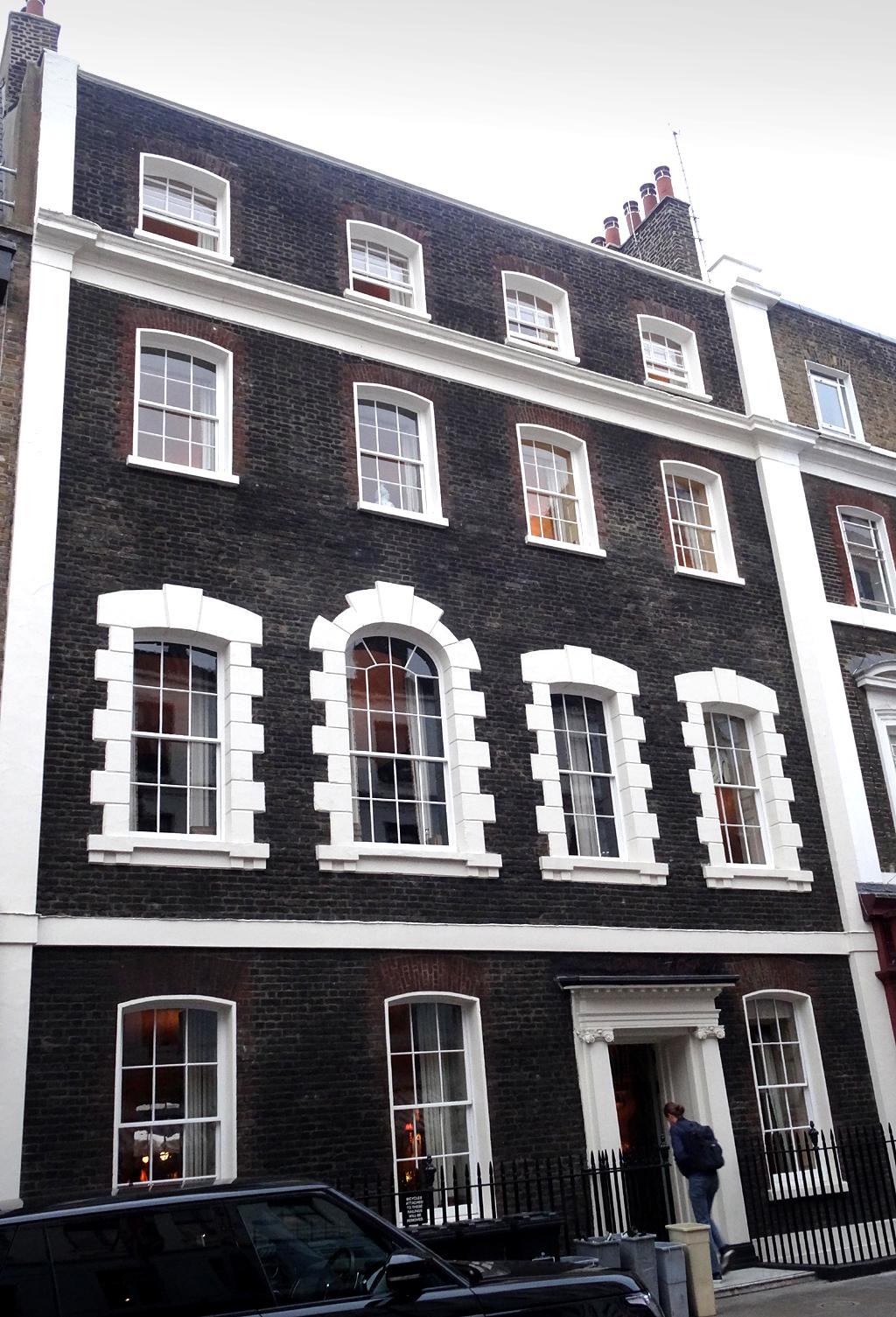
76 Dean St, Soho, London
Subscribe to the BBC News Magazine's email newsletter, external to get articles sent to your inbox.